White Mountain National Forest
- December 27, 2023
- 0 comment
The White Mountain National Forest is a breathtaking natural wonderland located in the northeastern region of the United States, the White Mountain National Forest emerges as a captivating testament to the untamed beauty of the American wilderness. Established in 1918 under the Weeks Act of 1911, this federally managed forest spans 750,852 acres across New Hampshire and a small portion of Maine. Beyond its designation as a national forest, the White Mountains serve as a playground for outdoor enthusiasts, offering not only hiking, camping, and skiing but also sustaining limited commercial activities like logging.
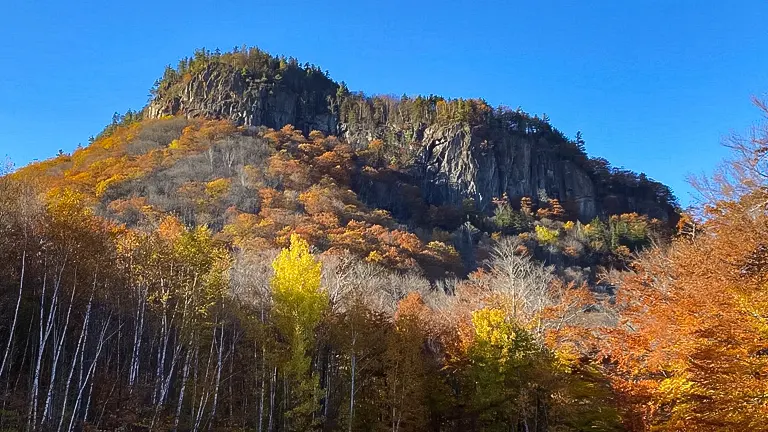
As the only national forest in either New Hampshire or Maine, and the most eastern in the United States, it boasts a rich tapestry of landscapes, from the iconic peaks over 4,000 feet to the extensive Appalachian Trail that winds through its heart. The forest’s diverse ecosystems, wildlife habitats, and commitment to conservation make it a cherished destination for those seeking respite and adventure in the embrace of nature’s grandeur. Whether you’re hiking to the summit of a majestic peak, camping under the stars, or simply taking in the peaceful serenity of the forest, there’s no shortage of incredible experiences to be had in this natural paradise.
Characterizing Features of the White Mountain National Forest
- Diverse Landscapes: The White Mountain National Forest is renowned for its diverse landscapes, ranging from mountainous hardwood forests to majestic alpine peaks. This variety of ecosystems provides a unique and picturesque setting that attracts nature enthusiasts, hikers, and outdoor adventurers throughout the year. From the vibrant hues of fall foliage to the pristine snow-covered trails in winter, the forest’s ever-changing scenery captivates visitors and offers an immersive experience in nature.
- Extensive Trail System: With an impressive network of 1,200 miles of hiking trails, the White Mountain National Forest beckons avid hikers and casual walkers alike. These trails wind through the forest, leading to scenic vistas, hidden waterfalls, and high mountain peaks. Whether it’s a challenging trek along the Presidential Range or a leisurely stroll through the wooded valleys, the trail system caters to a wide range of skill levels and preferences, making it a popular destination for outdoor recreation.
- Recreational Opportunities: The forest provides a plethora of recreational activities, making it a year-round destination. From camping under the stars at one of the 23 developed campgrounds to exploring the 400 miles of snowmobile trails in winter, visitors can indulge in a variety of outdoor pursuits. Additionally, the presence of six ski touring areas and four alpine ski areas makes the White Mountain National Forest a winter wonderland for skiing and snowboarding enthusiasts.
- Wildlife Habitat: Serving as a vital habitat for a diverse range of wildlife, the White Mountain National Forest is home to species such as moose, white-tailed deer, black bears, and over 200 species of birds, including the Bicknell’s Thrush. The forest’s commitment to conservation ensures that these habitats remain protected, providing a sanctuary for both common and endangered species. Birdwatchers, in particular, appreciate the forest’s status as a crucial breeding ground for priority species like the Bicknell’s Thrush.
- Federal Wilderness Areas: The presence of six designated Federal Wilderness Areas, covering a total of 149,500 acres, adds a layer of protected, untouched wilderness within the forest. These areas, established under the Federal Wilderness Protection Act of 1984, serve exclusively for recreational and scientific purposes, free from logging and commercial activities. They contribute to the overall ecological health of the forest and provide a true wilderness experience for those seeking a more pristine connection with nature.
- Water Resources: The White Mountain National Forest places a priority on protecting and ensuring the quality of its water resources. With 12,000 acres of wetlands, 4,750 miles of streams, 67 lakes, and 35 watersheds, the forest actively engages in restoring and revitalizing these vital water sources. This commitment not only preserves the ecological balance but also enhances the overall visitor experience by maintaining the integrity of water features throughout the forest.
- Educational Centers and Partnerships: The forest features several visitor centers, including those located at Lincoln, Campton (off Interstate 93), and Lincoln Woods (on the Kancamagus Highway). These centers serve as gateways to the forest, providing educational resources, trail maps, and information about the region’s natural and cultural history. Moreover, partnerships with natural resource agencies, conservation groups, and sportsmen organizations play a crucial role in habitat management, ensuring a collaborative approach to preserving the White Mountain National Forest for future generations.
History
The White Mountain National Forest (WMNF) has a rich history that traces its roots back to the early 20th century. The forest’s story begins with the passage of the Weeks Act in 1911, a landmark legislation that empowered the federal government to purchase private lands for the purpose of watershed protection and forest preservation. Motivated by the need to safeguard the region’s critical water resources, particularly in the aftermath of devastating wildfires, the Weeks Act laid the foundation for the creation of national forests in the eastern United States.
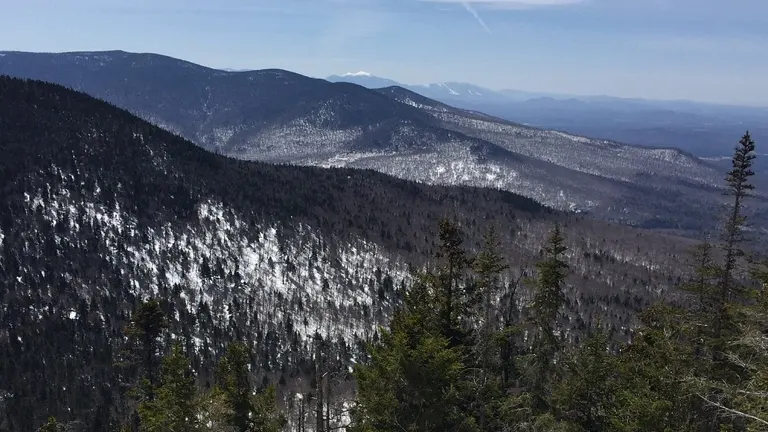
In 1914, federal acquisition of lands in the White Mountains began in earnest, culminating in the establishment of the White Mountain National Forest in 1918. Covering an expansive area of 750,852 acres, the forest became a vital part of the broader movement to conserve and manage natural resources for the benefit of both present and future generations. This early focus on watershed protection not only played a crucial role in safeguarding water quality but also laid the groundwork for the forest’s diverse ecosystems.
As the forest evolved, so did its role in recreation and land use. Despite its designation as a national forest, the WMNF is not solely dedicated to preservation but also serves as a multifaceted landscape for a range of activities. Over the years, it has become a popular destination for outdoor enthusiasts, offering opportunities for hiking, camping, skiing, and other forms of recreation. The forest’s trails, campgrounds, and scenic vistas have attracted visitors from near and far, contributing to its status as one of the most visited outdoor recreation sites east of the Mississippi.
The White Mountain National Forest has adapted to changing needs and priorities, balancing conservation efforts with responsible land management. Its significance extends beyond ecological preservation to include educational initiatives, habitat protection, and partnerships with various stakeholders. The forest’s three ranger districts, visitor centers, and partnerships with natural resource agencies underscore its commitment to maintaining a delicate equilibrium between environmental conservation and public enjoyment. Today, the White Mountain National Forest stands as a testament to the enduring vision of early conservationists and the ongoing efforts to balance ecological integrity with the diverse needs of a growing and appreciative community of outdoor enthusiasts.
Importance in Conservation and Recreation of White Mountain National Forest
The White Mountain National Forest (WMNF) plays a pivotal role in both conservation and recreation, embodying a delicate balance between preserving natural ecosystems and providing a haven for outdoor enthusiasts. On the conservation front, the WMNF serves as a critical protector of watershed areas, ensuring the quality of water resources in the region. Its commitment to preserving 12,000 acres of wetlands, 4,750 miles of streams, and 67 lakes underscores its dedication to maintaining ecological balance. Moreover, the forest hosts six designated Federal Wilderness Areas, covering 149,500 acres, which remain untouched by logging and commercial activities, serving as pristine landscapes for recreational and scientific purposes.
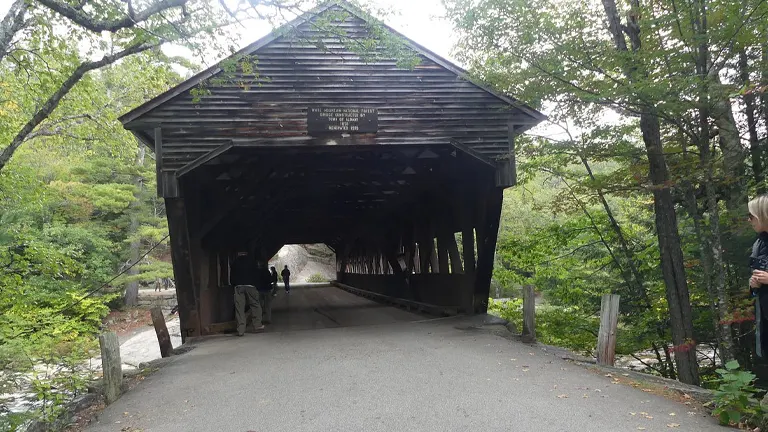
Simultaneously, the WMNF has become a cherished destination for recreational activities, drawing visitors year-round with its diverse offerings. Boasting an extensive network of 1,200 miles of hiking trails, the forest provides outdoor enthusiasts with opportunities to explore its picturesque landscapes, from mountainous hardwood forests to alpine peaks. The presence of 23 developed campgrounds, 400 miles of snowmobile trails, and four alpine ski areas caters to a broad spectrum of recreational interests, making the forest a hub for outdoor adventure. The WMNF’s popularity is further enhanced by its proximity to major metropolitan areas and the allure of iconic features such as the Appalachian Trail, contributing to its status as one of the most visited outdoor recreation sites east of the Mississippi.
In essence, the White Mountain National Forest stands as a testament to the intertwined values of conservation and recreation. It not only safeguards the region’s vital ecosystems but also invites individuals to experience the splendor of nature through a range of outdoor activities. The forest’s multifaceted significance reflects a holistic approach to land management, ensuring that the delicate balance between ecological preservation and public enjoyment is maintained for current and future generations.
Unique Location of White Mountain National Forest
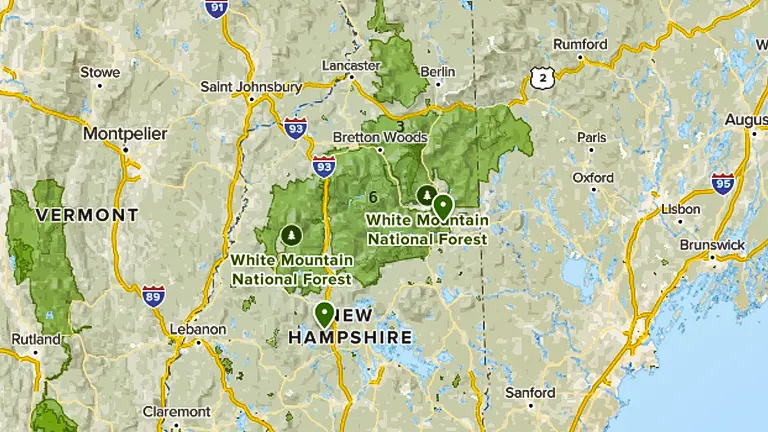
The White Mountain National Forest (WMNF) occupies a unique and strategically positioned expanse within the northeastern United States. Spread across 750,852 acres, the forest’s predominant presence in New Hampshire, with a smaller portion extending into Maine, makes it the singular national forest in both states. Situated in the heart of the White Mountains, the WMNF boasts the distinction of being the most eastern national forest in the United States, adding to its geographical significance. Its diverse landscapes are separated by two major highways, I-93 and US 2, creating three distinct sections. West of I-93, iconic features like Cannon Mountain and the Presidential Range dominate, while the eastern side encompasses the expansive Franconia, Twin, Bond, Sandwich, Willey, and Carter-Moriah ranges. The smallest section, north of U.S. Route 2, covers the Pilot Range and Mount Cabot. This unique positioning not only contributes to the forest’s diverse ecosystems but also facilitates accessibility, drawing visitors to its captivating landscapes and making the White Mountain National Forest a distinctive gem within the northeastern wilderness.
Diverse Vegetation and Unique Plant Species:
- Balsam Fir: This conifer tree is native to the northeastern United States and is a common sight in the White Mountains. It can grow up to 80 feet tall and is known for its fragrant needles.
- Mountain Ash: This deciduous tree is also native to the northeastern United States and is found throughout the White Mountains. It produces clusters of bright red berries in the fall that are popular with wildlife.
- Labrador Tea: This evergreen shrub is found in the higher elevations of the White Mountains. It has small white flowers in the spring and foliage that is used to make a tea-like beverage.
- Alpine Azalea: This small shrub is found in the alpine zone of the White Mountains. It has pink or white flowers that bloom in the summer and is a popular sight for hikers.
- Indian Pipe: This unique plant is found in the forests of the White Mountains. It has a white, waxy appearance and is devoid of chlorophyll, which means it does not rely on photosynthesis to survive.
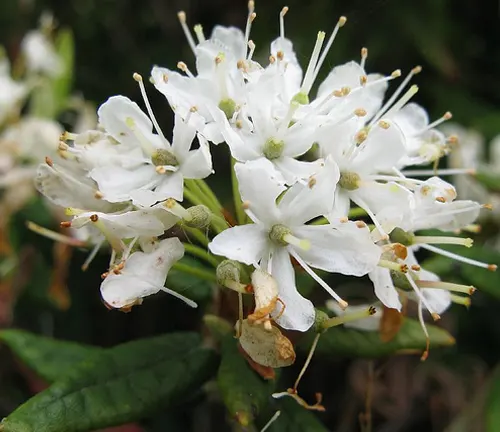
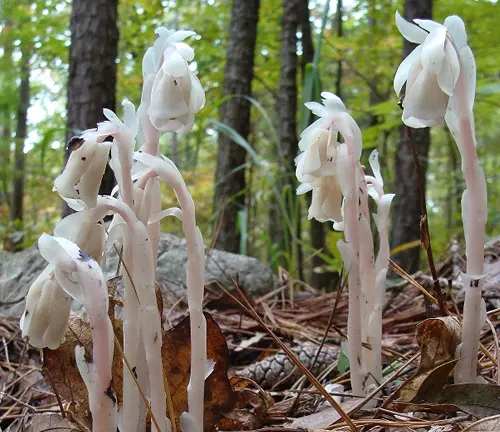
Overall, the diverse vegetation and unique plant species in White Mountain National Forest make it a fascinating place for nature enthusiasts to explore.
Different Species of Mushrooms in White Mountain National Forest
- Chanterelle: This edible mushroom is found in the forests of the White Mountains during the summer and fall. It has a distinctive trumpet-like shape and a golden-yellow color.
- Hen of the Woods: Also known as Maitake, this mushroom is found at the base of oak trees in the White Mountains. It has a fan-like shape and is a popular ingredient in Japanese cuisine.
- Reishi: This mushroom has a long history of use in traditional Chinese medicine for its immune-boosting properties. It is found on dead or dying trees in the forests of the White Mountains.
- Boletus: This genus of mushrooms includes several edible species that are found in the White Mountains. They have a distinctive cap and stem and are often used in soups and stews.
- Amanita: This genus of mushrooms includes both edible and poisonous species. They have a distinctive cap with white spots and a ring around the stem. While some species are edible, it’s important to be cautious when foraging for mushrooms and to only consume those that have been positively identified.
Fauna:
- White-Tailed Deer (Odocoileus virginianus): White-tailed deer are a common sight in the forest, contributing to the ecosystem’s balance as herbivores. They play a crucial role in shaping vegetation dynamics and are a primary prey for carnivores.
- Moose (Alces alces): Moose, with their iconic antlers, are a symbol of the forest. Their browsing habits influence plant growth, and they are an important species for both wildlife enthusiasts and conservationists.
- Black Bear (Ursus americanus): Black bears are apex predators in the forest and play a vital role in controlling prey populations. Their presence is a key indicator of a healthy and functioning ecosystem.
- Coyote (Canis latrans): Coyotes are adaptable predators known for controlling small mammal populations. Their howls are part of the forest’s nighttime soundtrack, contributing to its natural ambiance.
- Red Fox (Vulpes vulpes): Red foxes are skilled hunters, controlling rodent populations. Their presence adds to the biodiversity of the forest, and they are a captivating species for wildlife enthusiasts.
- Bald Eagle (Haliaeetus leucocephalus): Bald eagles are iconic raptors that inhabit the forest, showcasing the health of aquatic ecosystems. Their presence is a conservation success story, symbolizing the recovery of threatened species.
- Peregrine Falcon (Falco peregrinus): Peregrine falcons are known for their impressive aerial hunting skills. Their return to the White Mountains after conservation efforts is a testament to successful wildlife management.
- Canada Lynx (Lynx canadensis): The elusive Canada lynx is adapted to cold climates and preys on snowshoe hares. Its presence indicates a healthy ecosystem and is a focus of conservation efforts in the region.
- River Otter (Lontra canadensis): River otters are playful and agile mammals that contribute to aquatic ecosystem health. Their presence reflects the quality of water bodies within the forest.
- Eastern Timber Rattlesnake (Crotalus horridus): This venomous snake is part of the forest’s reptilian diversity. Conservation efforts aim to protect and sustain populations of this species, highlighting the importance of biodiversity conservation.
- Brook Trout (Salvelinus fontinalis): Brook trout are native to the region and are a valuable indicator of freshwater ecosystem health. Their presence contributes to the overall biodiversity of aquatic life within the forest.
- Woodland Jumping Mouse (Napaeozapus insignis): The woodland jumping mouse is a small, agile mammal that contributes to seed dispersal in the forest. Its behavior and ecology play a role in maintaining the health of plant communities.
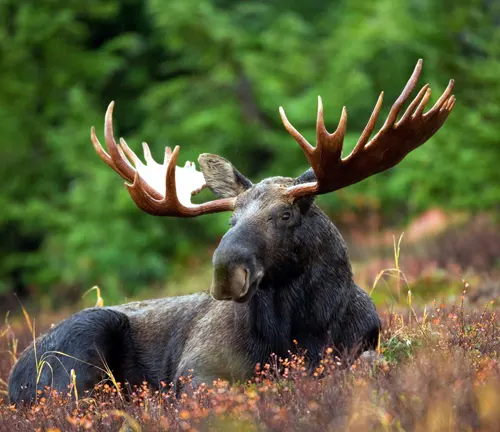

These species represent just a fraction of the diverse fauna inhabiting the White Mountain National Forest. Each plays a unique role in maintaining the balance of this vibrant ecosystem, making it a haven for biodiversity and a captivating destination for nature enthusiasts and researchers alike.
Importance as a Wildlife Corridor and Habitat for Threatened Species
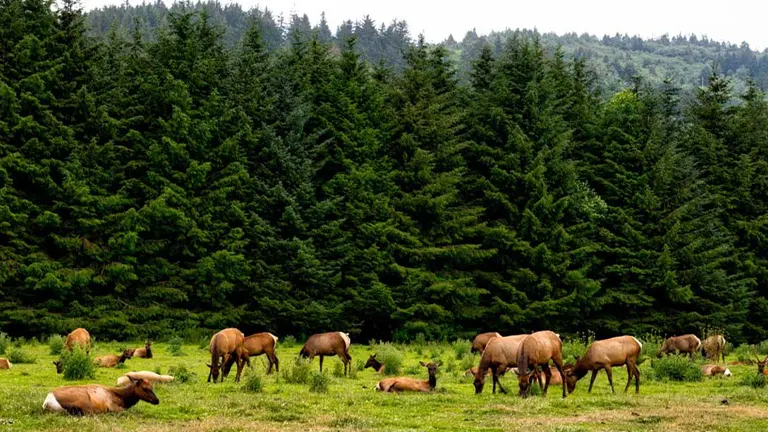
The White Mountain National Forest serves a critical role as both a wildlife corridor and a habitat for threatened species, embodying a haven for biodiversity and contributing to the conservation of vulnerable ecosystems. As a vast and interconnected landscape, the forest functions as a vital wildlife corridor, facilitating the movement of various species across its expansive terrain. This is especially crucial for ensuring genetic diversity, enabling animals to migrate, forage, and maintain their populations. Additionally, the forest provides essential habitat for several threatened species, including the elusive Canada lynx and the Eastern timber rattlesnake. Its diverse ecosystems, ranging from lush hardwood forests to alpine tundra, accommodate the specific needs of these species, offering refuge and aiding in their preservation. Through its role as a wildlife corridor and a sanctuary for threatened species, the White Mountain National Forest stands as a beacon of conservation, emphasizing the interconnected relationship between the health of the landscape and the well-being of its resident wildlife.
Activities in White Mountain National Forest for Visitors
1. Hiking
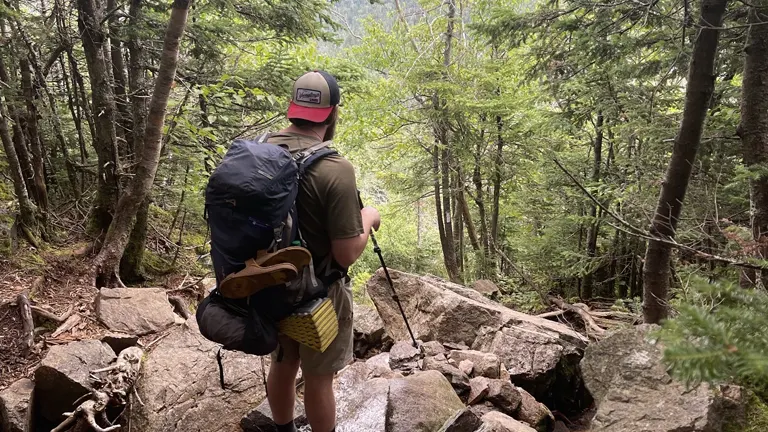
The White Mountain National Forest boasts over 1,200 miles of hiking trails, catering to all skill levels. From leisurely strolls to challenging summit hikes, visitors can explore the diverse landscapes, including dense forests, alpine peaks, and cascading waterfalls.
2. Camping
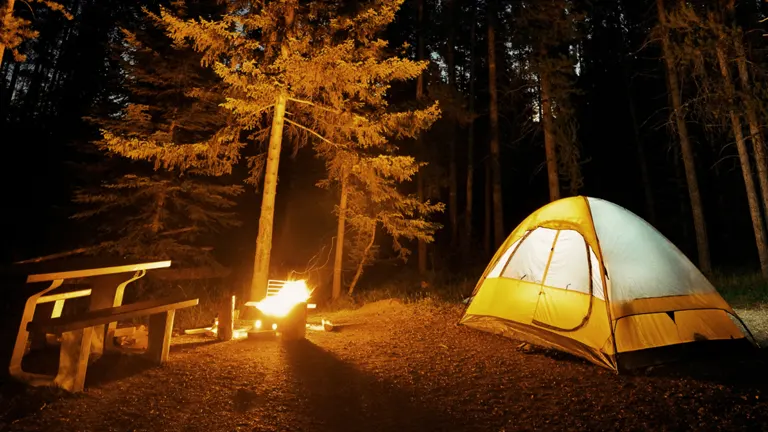
With 23 developed campgrounds, the forest offers a chance to immerse oneself in nature. Camping in the White Mountains provides a unique opportunity to experience the tranquility of the forest under starlit skies, fostering a deep connection with the natural surroundings.
3. Skiing and Snowboarding

In the winter, the White Mountain National Forest transforms into a snowy wonderland. With multiple ski areas both within and near its boundaries, visitors can enjoy a variety of winter sports, from downhill skiing to snowboarding, making the forest a year-round destination.
4. Wildlife Watching
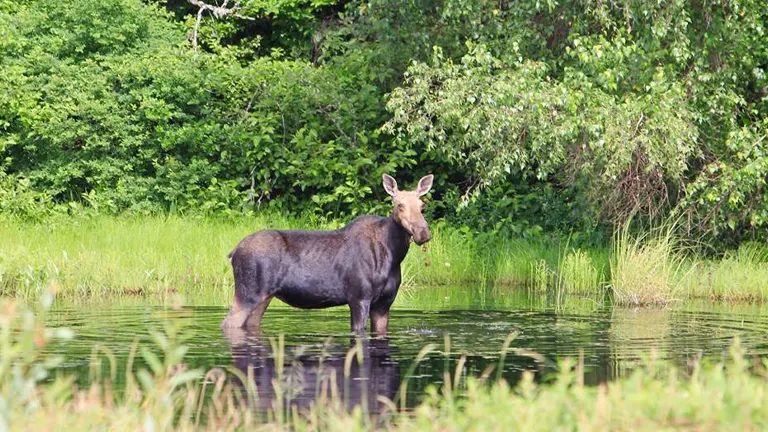
The forest’s diverse ecosystems support a rich array of wildlife. Visitors can engage in wildlife watching, catching glimpses of moose, black bears, and various bird species. This activity encourages an appreciation for the forest’s ecological complexity.
5. Snowmobiling

Winter enthusiasts can explore the forest’s snow-covered landscapes through its 400 miles of snowmobile trails. This exhilarating activity provides a unique perspective on the winter beauty of the White Mountains.
6. Scenic Drives
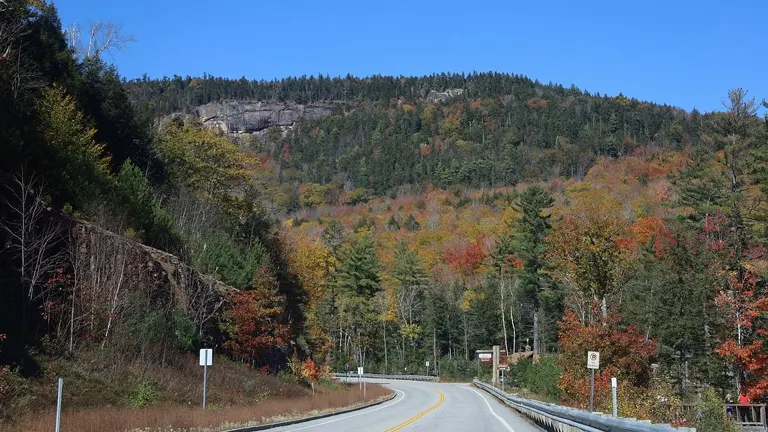
The forest offers picturesque drives along scenic routes such as the Kancamagus Highway. These drives showcase breathtaking vistas, dense forests, and iconic mountain views, allowing visitors to appreciate the grandeur of the White Mountains from the comfort of their vehicles.
7. Fishing
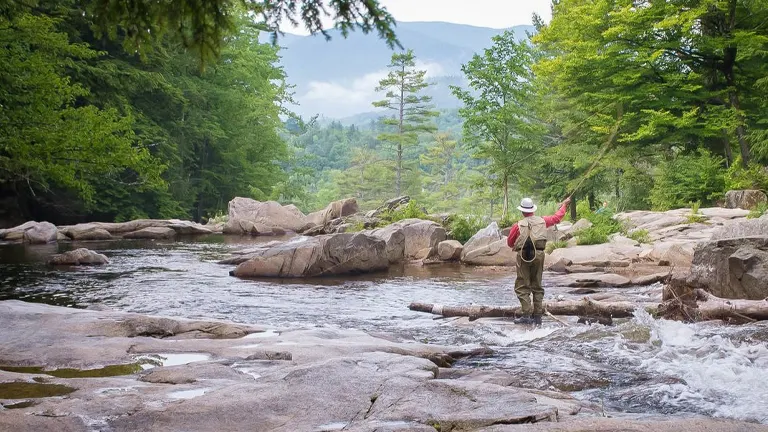
The White Mountain National Forest encompasses numerous lakes, streams, and rivers, making it an ideal destination for fishing enthusiasts. The forest’s water bodies host various fish species, providing anglers with opportunities for a serene fishing experience surrounded by nature.
8. Backpacking

Backpacking in the White Mountains allows for a more immersive and extended exploration of its backcountry. With well-maintained trails and designated backcountry campsites, backpackers can embark on multi-day adventures, discovering hidden gems and secluded landscapes.
9. Photography
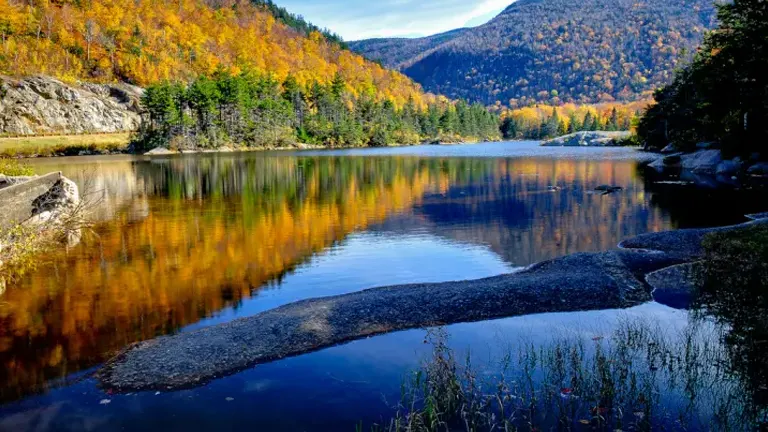
The stunning landscapes of the White Mountain National Forest provide a paradise for photographers. From sunrise over mountain peaks to the vibrant colors of fall foliage, every season offers captivating scenes, encouraging visitors to capture and share the beauty of this natural wonder.
10. Interpretive Programs

The forest hosts interpretive programs and guided tours, enhancing visitors’ understanding of its ecosystems, history, and conservation efforts. These educational experiences deepen the connection between visitors and the environment, fostering a sense of stewardship for this cherished natural resource.
Whether seeking adventure, relaxation, or educational experiences, the White Mountain National Forest offers a diverse range of activities that cater to the interests of every visitor. Each pursuit allows individuals to engage with and appreciate the forest’s unique attributes, ensuring a memorable and enriching experience.
Conservation and Management
- Federal Oversight and Legislation: The White Mountain National Forest is subject to federal oversight and management, guided by legislation such as the Weeks Act of 1911, which paved the way for its establishment in 1918. This legislative foundation provides the framework for conservation and sustainable management practices within the forest.
- Forest Planning and Resource Management: The forest engages in comprehensive planning processes that involve input from stakeholders, scientists, and the public. These plans outline strategies for resource management, addressing ecological health, recreation, and the sustainable use of natural resources to maintain a delicate balance.
- Wilderness Areas and Protection Zones: Six designated Federal Wilderness Areas, covering over 149,500 acres, are integral to the conservation efforts. These areas, such as the Presidential Range/Dry River Wilderness, serve as havens untouched by commercial activities, safeguarding critical habitats and contributing to the overall ecological resilience of the forest.
- Biodiversity Conservation Programs: The White Mountain National Forest actively participates in biodiversity conservation programs aimed at protecting rare and endangered species. This includes efforts to monitor and manage the habitats vital to the survival of these species, contributing to the overall health of the forest’s ecosystems.
- Wetland and Watershed Protection: With 12,000 acres of wetlands, the forest places a strong emphasis on wetland and watershed protection. By safeguarding these areas, the forest ensures the quality of water resources, promoting the health of aquatic ecosystems and the biodiversity they support.
- Recreational Infrastructure and Impact Management: The forest’s popularity for recreation necessitates careful management to minimize the impact on ecosystems. Thoughtful trail design, visitor education, and infrastructure development aim to balance the enjoyment of the forest with the preservation of its natural beauty and ecological integrity.
- Climate Change Adaptation Strategies: Recognizing the impacts of climate change, the White Mountain National Forest implements adaptation strategies. This includes monitoring and research initiatives to understand changing ecological patterns and implementing practices that enhance the forest’s resilience in the face of a changing climate.
- Partnerships with Conservation Organizations: Collaborations with conservation organizations, natural resource agencies, and local communities are pivotal for effective management. These partnerships enhance the collective effort to conserve the forest, drawing on diverse expertise and resources to address complex conservation challenges.
- Education and Outreach Programs: The forest engages in extensive education and outreach programs, fostering an understanding of its ecosystems and the importance of conservation. Visitor centers, interpretive programs, and school initiatives contribute to building awareness and promoting responsible stewardship.
- Research and Scientific Monitoring: Ongoing scientific research and monitoring initiatives inform conservation decisions. By staying abreast of ecological trends, habitat changes, and species dynamics, the forest management team can adapt strategies to preserve the long-term health and biodiversity of the White Mountain National Forest.
Recommendation
I strongly encourage you to venture into the White Mountain National Forest for a captivating fusion of natural splendor and cultural significance. This forest, celebrated for its diverse ecosystems, iconic landmarks, and recreational possibilities, provides a distinctive and immersive adventure. Engage in contemplative outdoor pursuits like hiking and wildlife observation, actively participating in continuous conservation endeavors. The picturesque trails, historical points of interest, and collaborative conservation initiatives establish the White Mountain National Forest as a vital destination for those in search of a harmonious blend of nature and recreational exploration.
Conclusion
In conclusion, the White Mountain National Forest stands as a testament to the extraordinary beauty and ecological richness found in the northeastern United States. With its towering peaks, dense hardwood forests, and pristine alpine landscapes, the forest provides a sanctuary for a diverse array of plant and animal species. Beyond its breathtaking scenery, the White Mountain National Forest offers visitors a myriad of recreational opportunities, from hiking and camping to skiing and wildlife observation. The commitment to conservation and sustainable management, evident in designated wilderness areas and collaborative efforts, underscores the forest’s role as a crucial habitat for threatened species and a vital wildlife corridor. Whether traversing the Appalachian Trail, exploring historic sites, or simply relishing the tranquility of nature, the White Mountain National Forest captivates with its unparalleled blend of natural wonders and recreational allure, inviting all who visit to immerse themselves in its timeless splendor.
Encouraging Responsible Visitation
Reflecting on my encounters in the White Mountain National Forest, I am inspired to advocate for intentional exploration. This dynamic and constantly evolving landscape flourishes when individuals actively connect with their surroundings. Whether you are a passionate hiker, a photography enthusiast, or a family seeking a weekend getaway, every moment spent in the White Mountain National Forest offers an opportunity to actively contribute to its continuous conservation efforts.
FAQs
- What makes White Mountain National Forest unique among national forests in the United States?
White Mountain National Forest stands out due to its diverse ecosystems, iconic peaks, and being the most eastern national forest in the country. Its rich biodiversity, recreational opportunities, and historical significance contribute to its distinctiveness. - Are there any endangered species in White Mountain National Forest, and what conservation efforts are in place?
Yes, the forest is home to threatened species like the Canada lynx. Conservation efforts include habitat preservation, monitoring programs, and collaboration with wildlife organizations to ensure the survival of these species. - What are the best times to visit White Mountain National Forest for different outdoor activities?
Spring and summer are ideal for hiking and wildlife observation, fall offers stunning foliage, and winter provides opportunities for skiing and snowmobiling. Each season presents a unique and captivating experience. - How does the forest address the environmental impact of recreational activities?
White Mountain National Forest employs careful trail design, visitor education programs, and sustainable infrastructure development to minimize the environmental impact of recreational activities while preserving the natural beauty of the landscape. - Are there guided tours or educational programs available for visitors interested in learning more about the forest’s ecology?
Yes, the forest offers guided tours, educational programs, and interpretive centers where visitors can delve into the ecology, history, and conservation efforts of White Mountain National Forest. - What measures are in place to ensure public safety, especially in challenging weather conditions?
The forest provides weather advisories, trail condition updates, and ranger assistance to ensure public safety. Additionally, it is essential for visitors to be well-prepared and informed about weather conditions before embarking on outdoor activities. - Can I camp within White Mountain National Forest, and are there specific regulations to follow?
Yes, the forest offers camping opportunities in designated campgrounds. Regulations include Leave No Trace principles, fire safety guidelines, and respecting wildlife habitats to maintain a harmonious balance between recreation and conservation. - How does White Mountain National Forest contribute to climate change resilience, and what can visitors do to support these efforts?
The forest engages in climate change research, adaptation strategies, and sustainable management practices. Visitors can support these efforts by practicing responsible outdoor behavior, minimizing carbon footprints, and participating in organized conservation programs.
White Mountain National Forest is a true gem of the northeastern United States, offering visitors a chance to experience the beauty and diversity of New England’s natural landscapes. From the stunning vistas of Mount Washington to the peaceful forests and streams, the park has something to offer for everyone. Whether you’re an avid hiker, a nature enthusiast, or simply looking for a peaceful escape from the hustle and bustle of daily life, White Mountain National Forest is a destination not to be missed. With its diverse plant and animal life, fascinating geological formations, and rich history, it is a place that will leave a lasting impression on all who visit. So pack your hiking boots and camera, and get ready to explore the wonders of White Mountain National Forest.


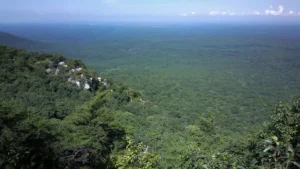

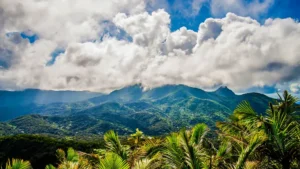



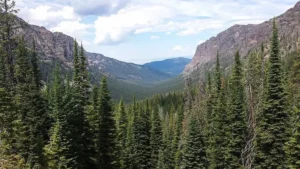

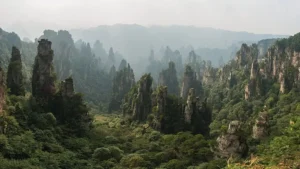

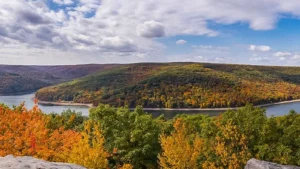
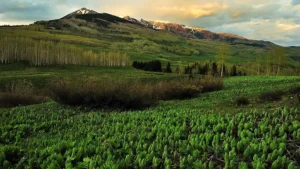
Leave your comment